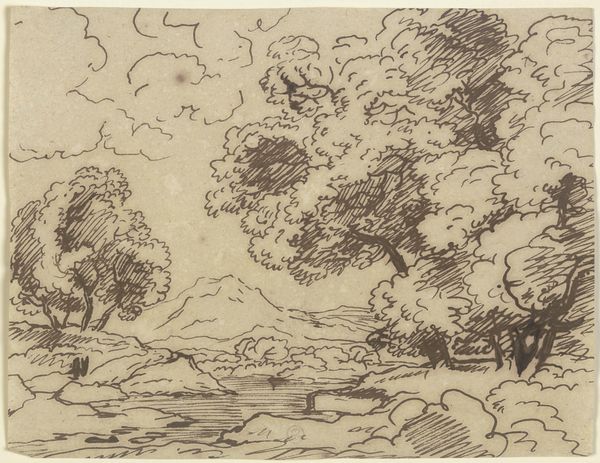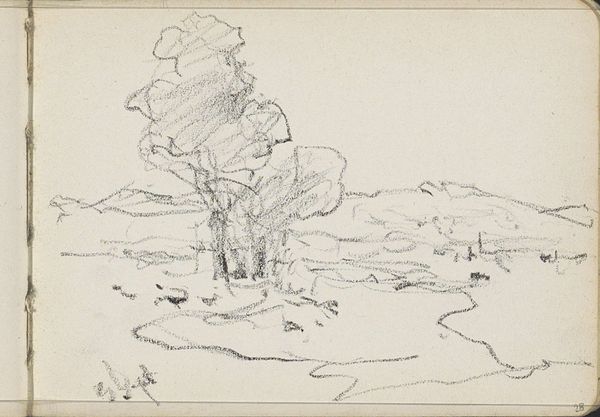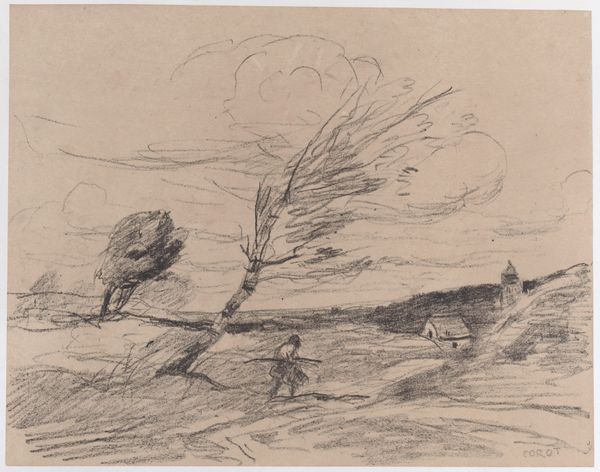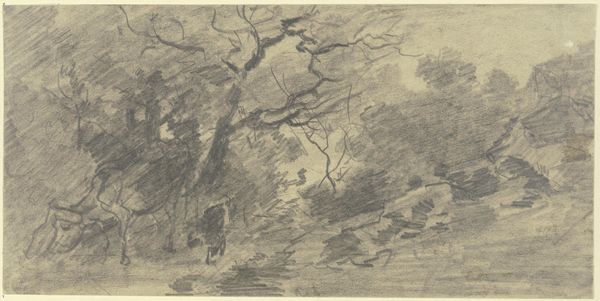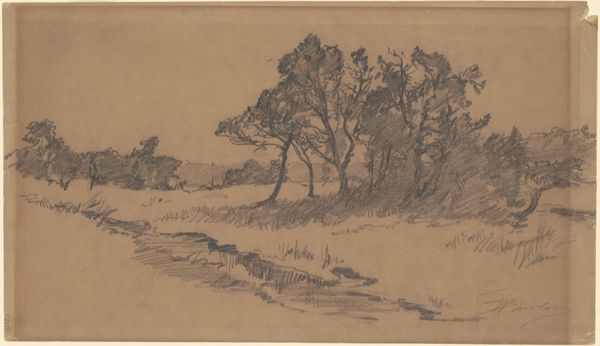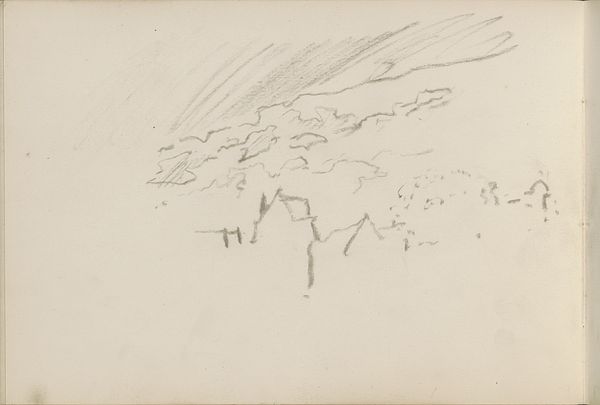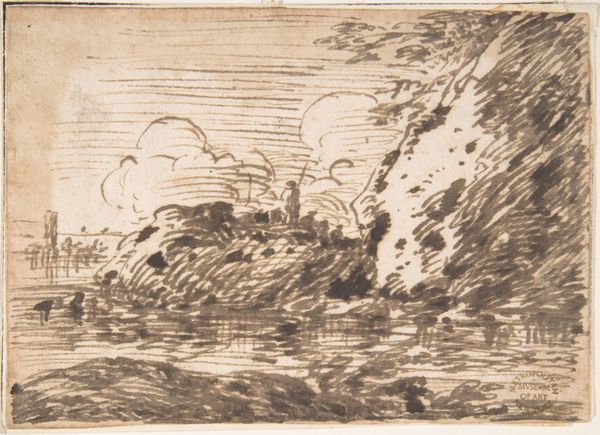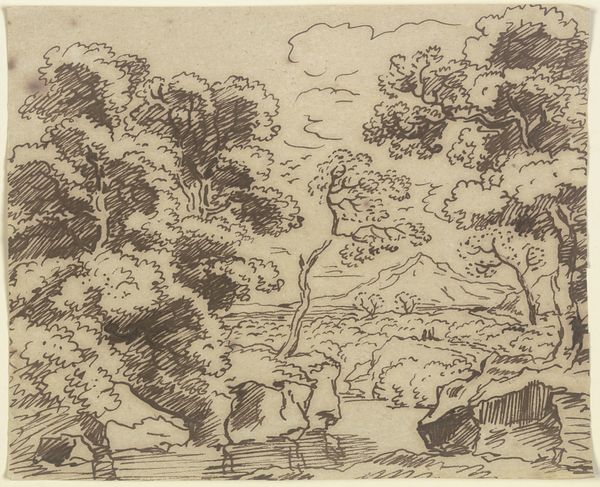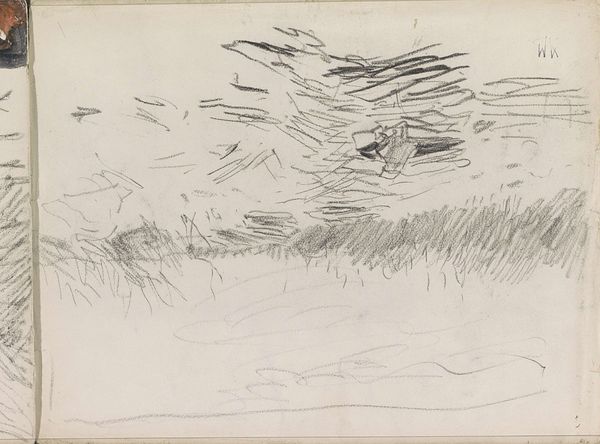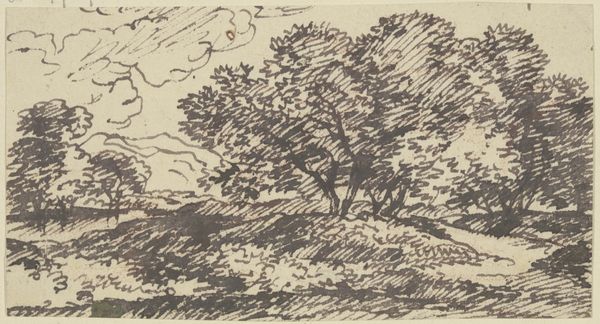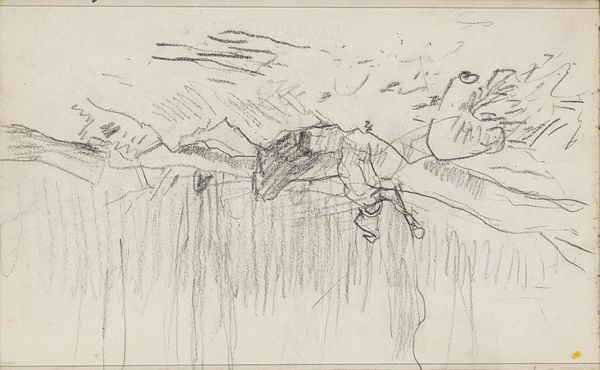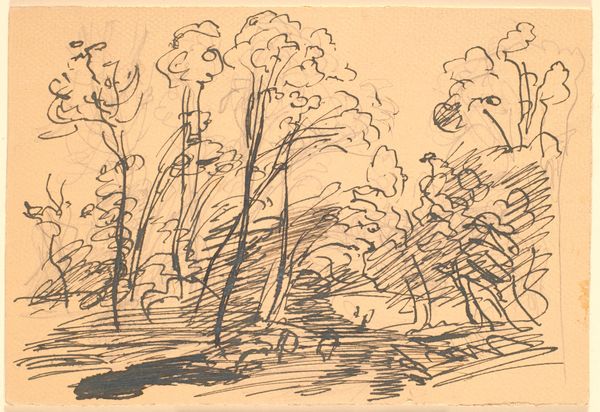
drawing, print, ink
#
drawing
#
ink drawing
# print
#
landscape
#
ink
#
line
Dimensions: Image: 8 9/16 × 10 13/16 in. (21.8 × 27.5 cm) Sheet: 13 3/8 × 18 13/16 in. (33.9 × 47.8 cm)
Copyright: Public Domain
Editor: This is Corot’s “The Lonely Tower”, an ink drawing from 1871. It has a wonderfully free and sketch-like quality, and it feels quite melancholic. What can you tell me about this piece? Curator: Well, consider the materials: ink and paper, humble and easily accessible. This challenges the prevailing hierarchy of art materials at the time. Oil paints and marble sculptures were seen as high art while drawings, inks were more workaday and considered less fine art, therefore. But Corot uses them to create this image and reflect everyday life as well. What about this process speaks to you? Editor: It's interesting to think of his deliberate choice to use seemingly common materials. You can feel a lack of pressure with the material. It allows his expression. Curator: Precisely. The quick strokes suggest spontaneity, a rapid response to the landscape. And look at the way the ink is applied: scribbled, layered, creating texture and depth, almost a topography of marks on the page. How does this layering inform the production of art? Is he concerned about high art at all? Editor: That layering, particularly in the foliage, almost obscures the forms, giving it an atmospheric feel, while I do not think that it concerned him to do high art or art at all. He seems keen to show that you can capture the environment with any material available. Curator: Exactly. Also consider the potential mass production through prints, making art more accessible to a wider audience, and democratizing art ownership. Where does it sit in landscape art tradition and the changing socio-economic landscape of 19th century France? Editor: This makes me consider who could buy a print and why this piece might appeal to them. That art can show, in every medium, any place in society. Curator: A fascinating point, how the materials themselves are not just means to an end, but integral to understanding the artist's choices and the artwork's cultural place and value, ultimately influencing art practice!
Comments
No comments
Be the first to comment and join the conversation on the ultimate creative platform.
